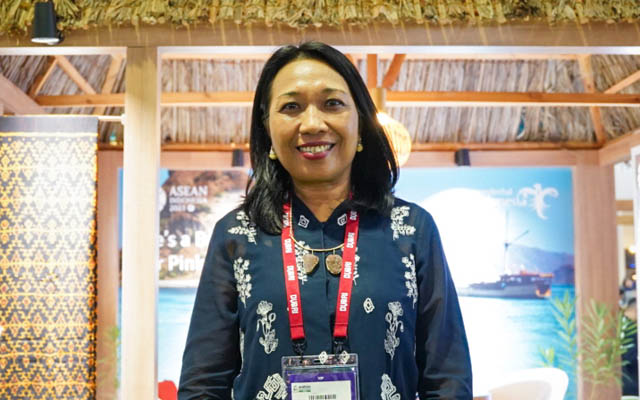Ni Made Ayu Marlhini, deputy minister for marketing at Indonesia’s Ministry of Tourism and Creative Economy, talks about developing new destinations, rural tourism and the power of domestic travellers
 What new offerings can visitors expect post-lockdown?
What new offerings can visitors expect post-lockdown?
Pre-Covid, we had almost 17 million tourists, then the pandemic happened. Now we’re focusing on quality tourism, sustainability, and people, planet profit.
Eight years ago, the government came up with a vision – the president had remarked that while Bali is famous, the country has equally beautiful and amazing potential elsewhere. So, we established five new destinations to develop.
In Sumatra, there’s Lake Toba, the world’s largest volcanic lake; Borobudur in central Java is the world’s biggest Buddhist temple; Lombok is a beautiful island next to Bali; Labuan Bajo is home to the Pink Beach; and there is huge potential for marine tourism at Likupang.
We’re ready to promote these destinations now. While infrastructure is ongoing in all of them, Borobudur, Lombok, and Labuan Bajo are already well established. The other two still need heavy investment in hard and soft infrastructure.
How do you build a new destination?
These places are beautiful but how do you get there? Where is the connectivity, amenities, transportation and infrastructure? The government said build them because infrastructure brings business; it builds economic movement. In Toba, for example, we established special economic zones to attract investors. (Once) we have five-star resorts and an airport, we then have to think about soft infrastructure, people, and training schools.
Lombok is beautiful but, until recently, it had nothing that Bali has. So, we built a MotoGP circuit for people to have something to do. If you went to Labuan Bajo five years ago, it was very different to what it is today. In May, Labuan Bajo hosted the entire 42nd ASEAN Summit. When our president said it had to take place in Labuan Bajo, we all thought “Wow, but how?”. Sometimes you need that push. When it becomes a priority, the business and investors will come together and find opportunities. Suddenly, within a few years, we now have five-star hotels and other infrastructure.
How do you ensure destination development is sustainable?
Destinations need to be sustainable. In Labuan Bajo, there are amazing coral reefs and if we don’t take care of them now, they will no longer be an asset. We also have to educate the people because they have never been exposed to this kind of tourism.
We understand how tourism can contribute to local communities. When tourists visit Labuan Bajo, they not only want to enjoy the beach, they want to visit the villages and see how people make a living. We are pushing this, but it’s not easy and needs a lot of education. It’s a long journey ahead but with the right mindset and leadership, we can achieve people, planet and profit.
We also need to educate tourists to be responsible. One or two tourists are easy to handle but when it’s hundreds, thousands, millions, it gets harder. Nonetheless, it’s our job to educate and that’s part of responsible and sustainable tourism.
How do you promote new destinations?
My job is not only to promote, but to also tell stories. We have to get the narratives out – if people haven’t heard of the destinations, it’s because we are not doing our jobs right. This year, we are going to be more active, get out there and get the private sector involved because the government can’t do it alone.
How important is domestic tourism?
Thankfully, during Covid, we were blessed with domestic tourists. We have a population of 275 million, so domestic travel was big. The government decided to develop village tourism because during the pandemic, people were tired of not going anywhere.
Village tourism brings back childhood memories of seeing the paddies and the rivers flow in these small villages. Three years ago, we created village tourism programmes and about 6,000 villages registered, but many were basic. So we designed standards and regulations, such as villages have to manage their waste, have toilets, adequate home-stay facilities, and someone to manage it all.
Is domestic tourism still key post-lockdown?
Our target for 2023 is 8.5 million foreign tourist arrivals, but we also have a domestic target of 1.4 billion movements. There are almost 300 million people here, so if one Indonesian travels three times a year, we will achieve that.
It’s important that Indonesians travel because it equals economic movement. If you rely solely on international tourists, then it’s only concentrated in a few places. Public holidays are very important. In fact, the government decided to extend a recent public holiday from two days to one week. During that period, 150 billion rupiah (US$10.06 million) was spent, showing the power of domestic tourism.




















